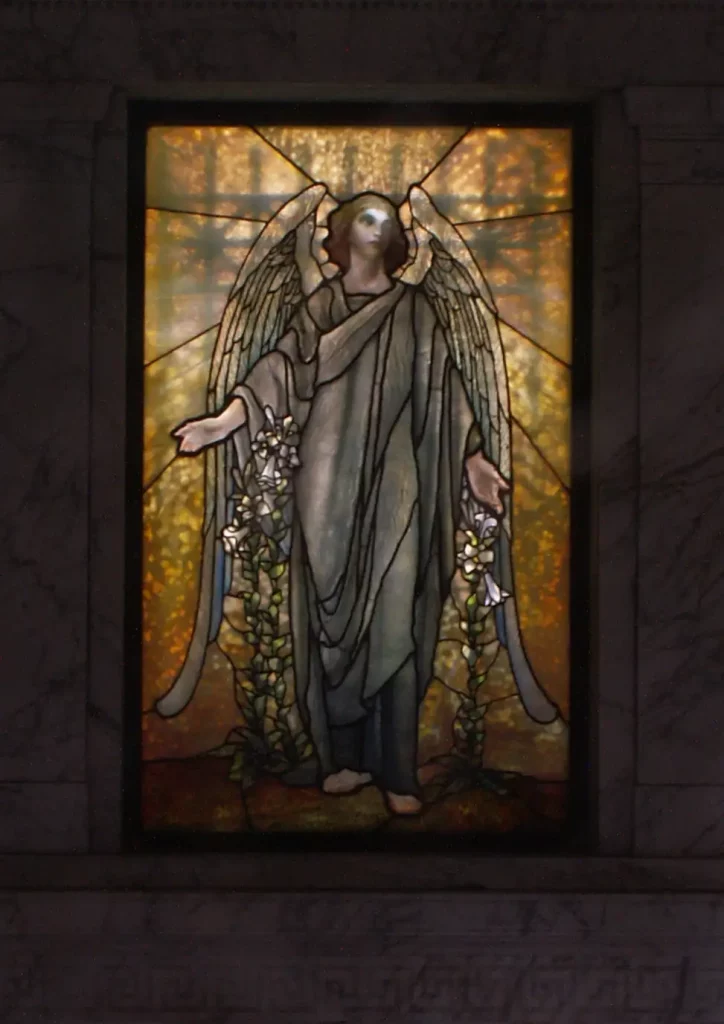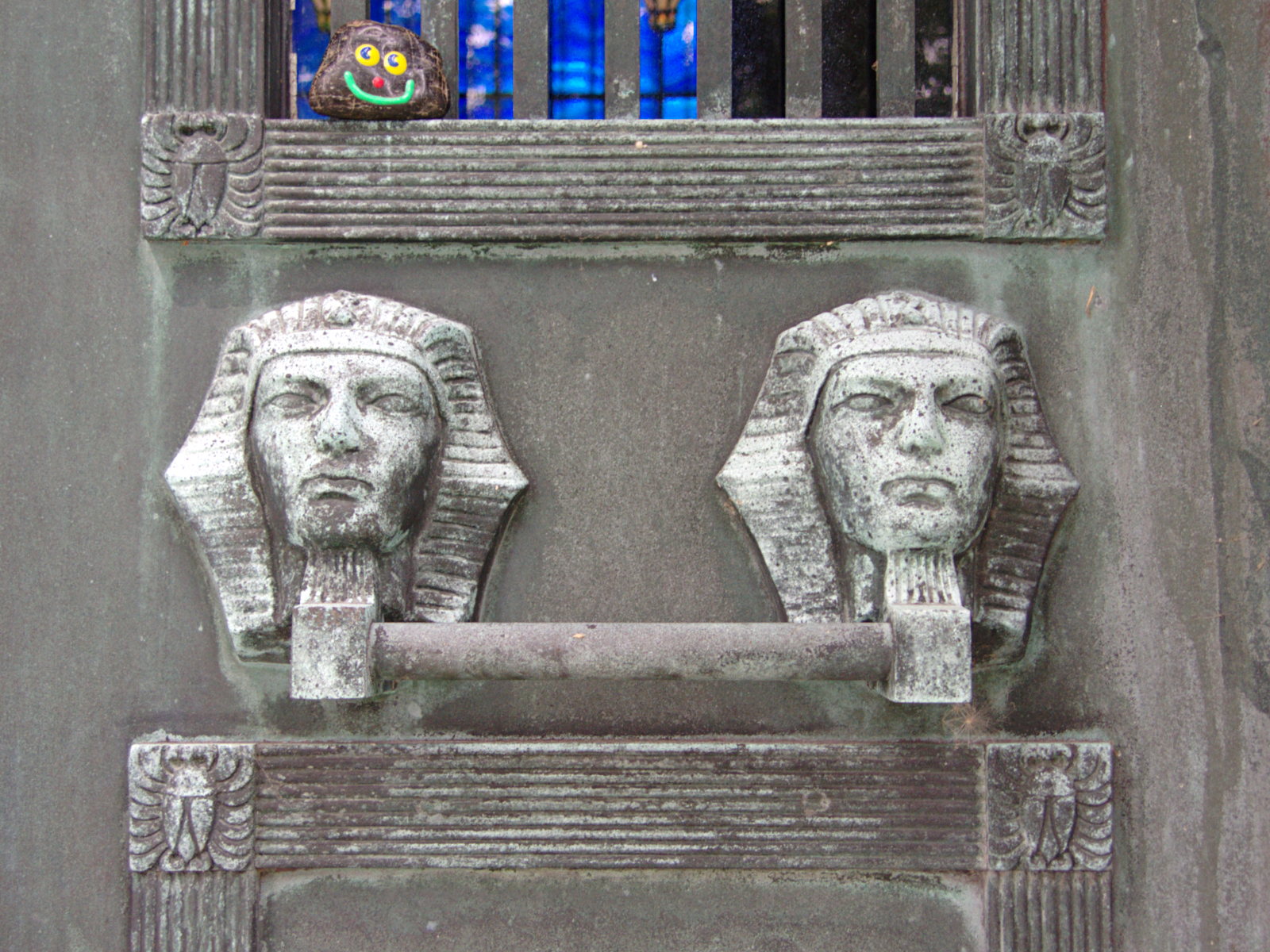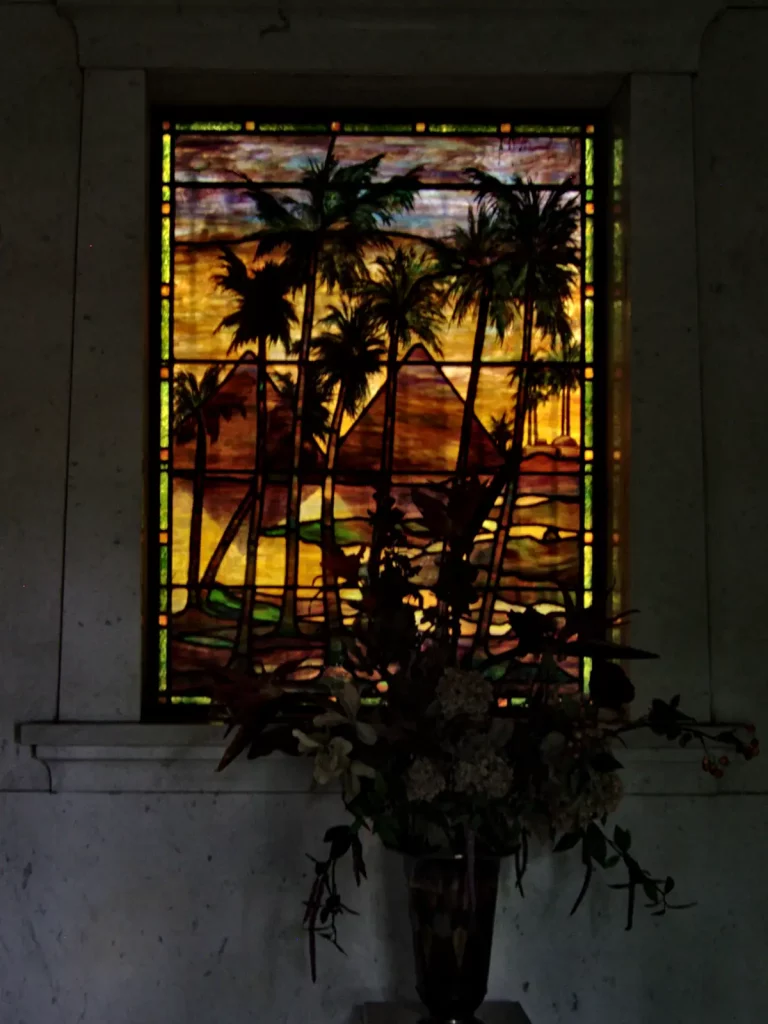
A monument dealer’s standard-model mausoleum with an elegant Star-of-David window inside.


A monument dealer’s standard-model mausoleum with an elegant Star-of-David window inside.

Robert Pitcairn, for whom the borough of Pitcairn is named, was head of the Pittsburgh Division of the Pennsylvania Railroad. It sounds like a mid-level management position, but in fact it was more like a viceroyalty. This elegant Corinthian temple demonstrates how wealthy such a position could make a man.
This particular picture has been donated to Wikimedia Commons under the Creative Commons CC0 1.0 Universal Public Domain Dedication, so no permission is needed to use it for any purpose whatsoever.

A lavish Doric temple, a miniature Parthenon or (even closer) Temple of Hephaestus, this mausoleum manages to convey the two often-conflicting messages “I had good taste” and “I was rich.”




Another Egyptian mausoleum that hits all the expected marks, except that it is too small (or cheap) for lotus columns. This one, however, adds the delightful detail of pharaoh’s-head door pulls, which more than makes up for the missing columns.

Little smiley characters like the one at upper left occasionally appear on mausoleum doors in Pittsburgh cemeteries. It’s a cheerful little mystery.
A thorough history of the Sunsteins and Speyers is in the Jewish Encyclopedia of Western Pennsylvania.

The West View Cemetery is a Jewish cemetery, but negative historical associations did not prevent two of its residents from specifying the popular Egyptian style for their grand mausoleums. This is one of them, built (according to the inscription) in about 1930 by Herman Kamin. It is not as grand as the Egyptian mausoleums in the very richest cemeteries, but it does have fresh palms in the urns, and a fine view of the pyramids from inside.
